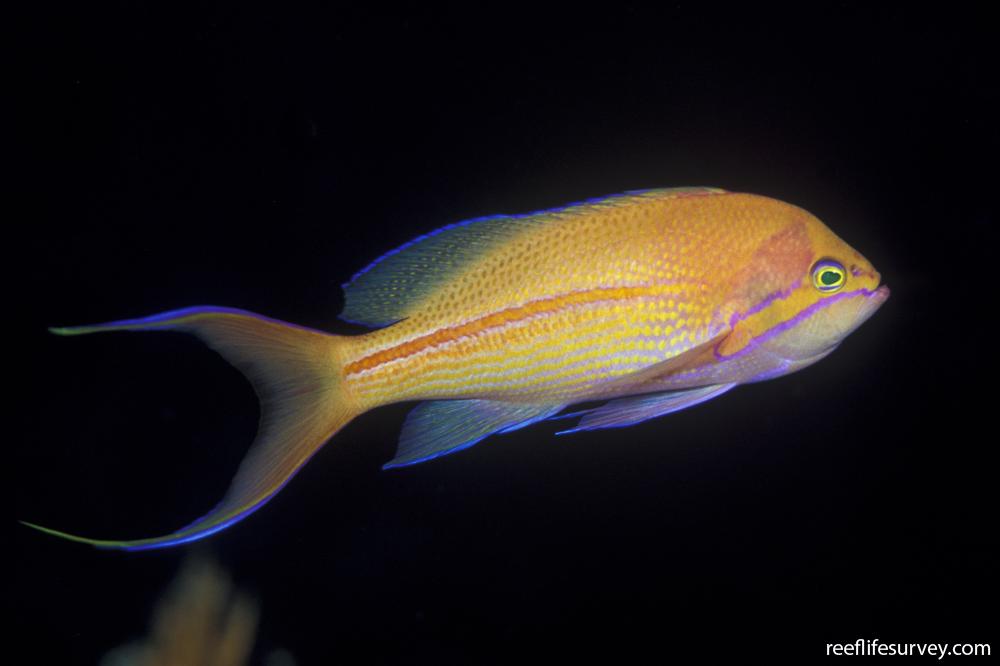Pseudanthias fasciatus
One striped anthias | One-stripe Anthias | Redstripe Anthias | Striped Anthias | Pseudanthias fasciataSimilar Species
Same Genus
Distribution
Tropical Indo-Pacific
Description
Orange with a broad light-edged red/orange stripe along centre of body, and a purple edged orange strip curving from snout through eye to pectoral fin. Deeper body than most basslets. Found in or near caves of steep outer slopes and drop offs, adults swimming upside down against ceiling of cave. Length to 21cm.
Information
Max Size: 21 cm
Sea Temperature Range: N/A
Depth: 20-150m
Habitat Generalization Index: N/A
Also referred to as the SGI (Species Generalisation Index), this describes the habitat niche breadth of the species. Species with values less than 15 are found in a relatively narrow range of reef habitat types (specialists), while those over 25 may be found on most hard substrates within their range (generalists). Learn more here.
Conservation and Rarity
IUCN Status: Not Evaluated
Occurrence: Rare (1.0% of sites)
Occurrence describes how often the species is found on surveys within its distribution. It is calculated as the % of reef sites surveyed by RLS divers across all the ecoregions in which the species has been observed
Abundance: Many (48 per transect)
Abundance is calculated as the average number of individuals recorded per RLS transect, where present.
Edit by: Joe Shields


























